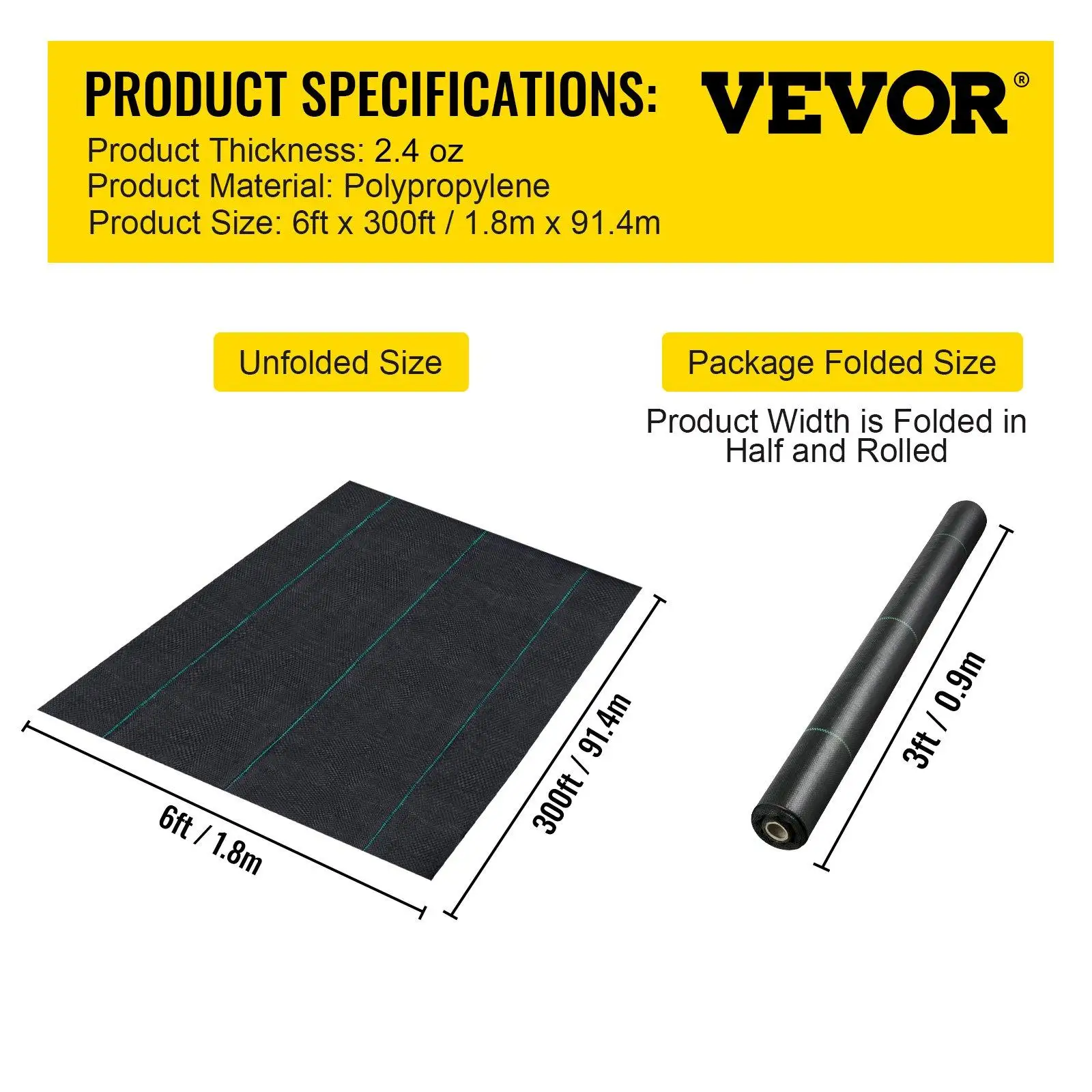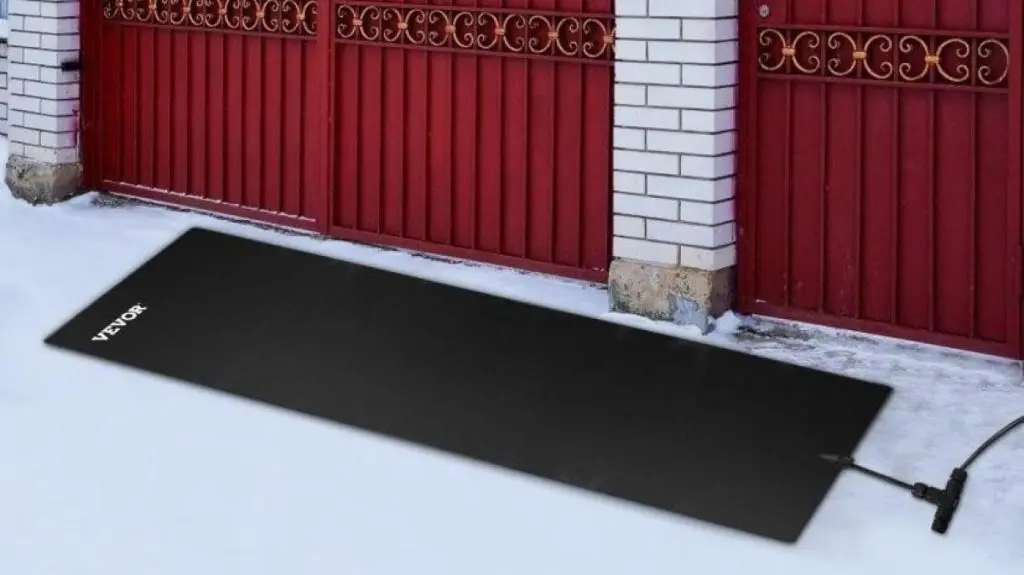Gardening is a truly therapeutic activity. It alleviates the discomfort, heaviness, and daunting challenges we face on a daily basis. But as a matter of fact, gardening can be stressful when one sees their plants dying or failing. Foremost, the much more inconvenient task is weeding, as if these weeds are the most nefarious being that ever graced the Earth. However, thanks to technological advances, you can reduce the need for such a chore by investing in weed barrier landscape fabric. In this article, we will provide you with insightful tips for purchasing one.
5 Tips to Consider for Choosing the Best Commercial Landscape Fabric
Landscapes can greatly enhance the comfort of a household, but weeds can pose tremendous challenges. A weed barrier can keep such pesky garden rodents at bay and preserve the aesthetic of what you’ve expended months perfecting. It happens just as the weed barrier prevents light, oxygen, and relative humidity from supporting weed growth in sprouting. Weeds can and will be eliminated. That said, with a wide range of available landscape weed barriers in the market, it would be a tricky job to find one that best suits one’s needs and preferences.

Factors to Consider in Selecting the Best Landscape Weed Barrier Fabric
1. Process and Material Used. Weed barriers are available in both woven and non-woven fabrics. The majority of weed barriers are comprised of polypropylene or synthetic fibers. Nonwoven weed barriers can be a less penetrable advantage that is ideal for heavy-duty weed management. They are much less prominent for flower beds and potted plants because they are not breathable or permeable. Conversely, they are ideal for zones where no crops should sprout, such as passageways or stone or boulders greenery. Woven barriers, as the name implies, are constructed from plain weave or other raw material to form a fiber thread. They are preferable for the garden area because, unlike nonwoven alternatives, they have relatively small gaps that enable air and water to permeate the soil for photosynthetic activity. Porous weed barriers operate correspondingly to knitted barriers, except that otherwise of a woven fabric, they have speck gaps that authorize water and air to pass along.
2. Usage Longevity and Durability. A quality weed barrier should last a minimum of 5 years and up to 20 years or more. Weed barriers come in various materials and thickness levels, both of which contribute to their durability and lifespan. A good weed barrier must last for at least 5 years and up to 20 years or over. The best weed-blocking alternatives are designed to withstand the rigors of use as well as drizzly and hot summer constraints. This ensures that they will not tear easily asphalt and will not degrade after a period of rain or saturation to bright sunlight. Weed barriers are available in a variety of particles and layer levels, which both play a role in their sturdiness and longevity. The longer the obstruction has to last, the relatively thick and far sturdier the components. Take into account the appropriate thickness for the job. A porous barrier, for instance, is a good choice under a soft sand passageway, but it may be too bulky for a vegetable or flower bed. In such a case, a relatively thin, more penetrable weed barrier, even if less sturdy, could be a wiser alternative.
3. Convenience. It is critical when acquiring landscape weed barrier fibers that it is easy to move from one location to the next and that they can be installed easily on your lawn. The cloth size on a weed barrier spool must be visible so that you can approximate how much surface a roll can accommodate. For areas that need multiple chunks of weed barrier fabric, allow for an 8-inch intersection. Weed barrier shafts are customarily 3 to 6 feet in diameter and can vary in length from 50 to 200 feet. Take into account a broader roll for bigger surface zones to cover areas smoother. When contrasting similar-sized barriers, a denser and bulkier roll usually means a thicker and more durable fabric. Professional-grade merchandise, like most household products, is more expensive, but it may have extra advantages such as more eco-friendly materials or greater UV resistance.
4. Nature-friendly. Bio composite barriers, such as cloth or silk, are a more environmentally friendly choice because they degrade way quicker than polymers. Regardless of the component, you can lessen your carbon impact by selecting a long-lasting alternative, using the barrier for as extend its life, and safely disposing of it. Understand natural barriers such as mulch, crop residues, clay, and other natural materials to provide the most environmentally friendly alternative. Natural barriers necessitate more effort, but because they are biodegradable, they provide the most sustainable option.
5. UV Ray Receptivity. UV light is the culprit of whatever garden textile and will inevitably cause the degradation of all vulnerable weed barriers. While a few high-quality weed barriers are not marketed as UV durable, they are created of long-lasting substances that are capable of lasting 5 years or more in a lawn. Try wearing the weed barrier with leaf litter, small stones, boulders, or any other natural canopies to increase UV survivability. This reduces the barrier’s vulnerability to UV rays, allowing it to last longer. When it comes to UV tolerance, you have two choices. Some fabrics are naturally UV resistant and are typically labeled as such. Everyone else is UV stabilized, which indicates they have been regarded with a UV barrier to make them more resistant to UV deterioration.
VEVOR Commercial landscape fabric

Use the VEVOR commercial landscape fiber weed roadblock to make your landscape procedure much relatively easy. This weed barrier is commercial-grade, making it ideal for use as a weed blocker layer on parking lots or corridors. This is a heavy-duty weed barrier that is highly resilient and durable, with a life expectancy of approximately 20 years. It also has many additional properties, such as boosting soil health, assisting in erosion control, and allowing substances to become more stable. This is an incredible asset to any courtyard, steady trap, or misting trough zone where the aspects are ideal for vegetative growth.

Such a VEVOR landscape weed barrier fiber is 3 ounces and estimates 6.5 ft wide by 300 ft long. The industrial-grade weed barrier has arrived to completely cover a 1950 sq. ft area, making one’s job easier and completely stress-free. It keeps weed growth at bay in the garden and flower beds, boosting efficiency and productivity significantly. It is a high-performance weed barrier with exquisite absorption. Furthermore, the fabric’s sturdy architecture prevents weed or grass from passing along, efficiently and successfully hindering weed or grass production.

VEVOR landscape fabric allows the soil to respire and retains moisture, and is intended to let air and moisture pass along; thus, it can preserve your soil’s soil moisture, saving users water hours while maintaining fluids from puddled on the fabric’s surface. Besides that, the black color has effective shading efficiency, and the fabric is environmentally friendly. Furthermore, the weed block fabric will guarantee you long-lasting weed protection in a variety of seasonal changes. The VEVOR fabric weed barrier is simple to trim as well as assemble. It is simple to customize the fabric dimensions and form to satisfy your specific demands. Ecofriendly stripes on the garden weed fabric aid in vegetation conformity. A clear green line makes it easier to cut and arrange your plants. Simply fold up it, snip it, and place it in the preferred destination. Use mainstays to guarantee the weed barrier fibers for better weed management.

Weed mat cloth will prevent pesky weeds at bay in your meadow. Landscape fabric is preferable for the garden, farming, and industrial applications such as greenhouses, vegetable patches, flower beds, synthetic turf, sidewalks, small stones, porches, and boulders, among others. VEVOR is also an excellent material for covering plants to guard them against the factors, particularly during harsh weather when ice, snow, and blizzards are common.

Before deciding on the choice of weed barrier to buying, take into account a few key variables to assist you in making your final decision. This can make the difference between a weed barrier that does its job for a short amount of time or generations. There are also weed constraints with extra features, which can assist you in purchasing a more multi-functional item. Consider VEVOR to be your best option.
We hope you found our review of the best weed barriers useful. Choose wisely, and you’ll find yourself spending less time slogging in your meadow and much more time exploring it.
Frequently Asked Questions About Commercial Landscape Fabric
1. Why do I need to use landscape weed barrier in my garden?
Commercial landscape fiber is primarily used to block vegetative growth by skilled landscapers, farm workers, and enthusiastic gardeners. Even so, it is also employed in lawns to add splendor under stylish granular material and boulders.
2. What material is used for commercial landscape barriers?
Weed barriers are comprised of woven and non-woven materials used. Most weed barriers are made from polypropylene or polyester.
3. How Much Does Landscape Fabric Cost?
Landscape fabrics are available in a wide range of prices, ranging from $5 to $10 per square foot. Your total cost will be influenced by the size and type of material you select.
4. Does Landscape Fabric come with hazardous chemicals?
It is dependent on the item you acquired. It is critical that you conduct research on the landscape fabric that you intend to purchase. Instead of removing weeds, you may end up harming your plants.
5. Does landscaping fabric really work?
If your vegetable patch struggles from erosion caused by heavy rainfall or wind gusts, landscaping fabric can be extremely beneficial. It’s also great for keeping your soil in place if you have a garden on a hill. The fabric will also aid in safeguarding your plants’ roots from concentration caused by erosion, which could result in disease, root rot, or other types of harm.





